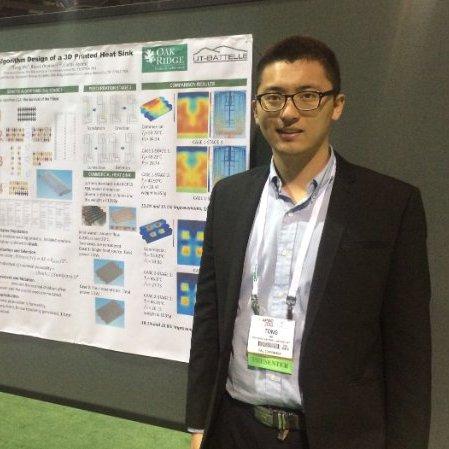 We certainly spend a great deal of our lives worrying about, attempting to manipulate, or talking about the temperature. Unless you live in one of those rare perfect climates, it’s rarely just right. And an entire industry has been based around making us more comfortable. That goes for our electronics too, which put out an incredible amount of heat—all of which needs to spread out, go forth, and dissipate.
We certainly spend a great deal of our lives worrying about, attempting to manipulate, or talking about the temperature. Unless you live in one of those rare perfect climates, it’s rarely just right. And an entire industry has been based around making us more comfortable. That goes for our electronics too, which put out an incredible amount of heat—all of which needs to spread out, go forth, and dissipate.
The heatsink is a device generally used to divert heat from the CPU and other parts of your PC, as well as working in other electronics too. The idea is to preserve your valuable equipment and devices from being damaged by heat. Some materials, generally metal, work better than others for heatsinks, and they range in both size and price—all depending on the manufacturer. And while we might be concerned about our body temperature, keeping our electronics devices functioning properly is often just as high a priority, if not more so.
 Now, two projects coming out of the US, with the two teams working together, are showing that the benefits of 3D printing can be applied to improving heatsinks. From Oak Ridge National Laboratory, researchers are showing that 3D printed aluminum may be a more viable source for conducting heat than traditional materials. And at the University of Tennessee Knoxville, a team has taken on the challenge of making genetic algorithms that combined with the customization available through 3D printing, allow for better heatsinks.
Now, two projects coming out of the US, with the two teams working together, are showing that the benefits of 3D printing can be applied to improving heatsinks. From Oak Ridge National Laboratory, researchers are showing that 3D printed aluminum may be a more viable source for conducting heat than traditional materials. And at the University of Tennessee Knoxville, a team has taken on the challenge of making genetic algorithms that combined with the customization available through 3D printing, allow for better heatsinks.
The two studies are linked as each bit of research complements the other, offering improved materials and shape, as well as great future potential for improvement in heat dissipation with electronics. The ORNL study shows that with 3D printing they were able to make ‘one-piece exchangers with complex internal structures’ that are able to offset heat.
“Increased power densities in electronics will require more efficient heat sinks, and additive manufacturing combined with a simple thermal annealing process could help designers meet that goal,” states the ORNL website.
Meanwhile in his paper, ‘Genetic algorithm design of a 3D printed heat sink,’ Tong Wu from UTK outlines how the UTK team’s genetic algorithm works in designing better heatsinks while working with the pre-specified sizes and shapes required. Wu also points out that without 3D printing, some of these designs would not be possible at all.
“This approach combines random iteration processes and genetic algorithms with finite element analysis (FEA) to design the optimized heat sink,” states Wu in his paper.
In comparing aluminum materials, the researchers compared thermal conductivity. Pitting the traditional 6061 aluminum heatsink (with <1% Si and 1.5% Mg) against one 3D printed through direct metal laser sintering by Linear Mold AMS (using10% Si and 0.5% M), they found that the 3D printed model performed much better after treatment.
Initially, the 6061 alloy, at room temperature, exhibited thermal conductivity of 180W/mK, while the 3D printed heatsink only showed 110W/mK. (Note that a higher number indicates better thermal conductivity.)
Subjecting the two heatsinks to higher temperatures, the research team saw that both of them varied, but in a linear way, and converging to 170WmK at 220°C. After allowing both heatsinks to be heat-treated at 300°C and then taken right back to room temperature, the team observed that both materials showed improved thermal conductivity; however, this is where the study took a turn: after heat-treatment, the 6061 model only improved by a few W/mK, while the 3D printed heatsink rose to a permanent thermal conductivity of just under 200W/mK.
With the materials element underway on a positive note, the researchers then turned to examining the benefits 3D printed heartsinks in more arbitrary shapes would offer, as well as how to design them. To do so, they employed their genetic design algorithms and finite element modeling in COMSOL software, using a 50kW water-cooled silicon carbide H-bridge inverter for electric vehicles as an example.
The team created a reference model heatsink that offered a thick aluminum plate with deep grooves cut into it and a copper pipe winding through them to dissipate the heat in the water within. Then, they made both a 64 x 64 mm switching module dissipating 2kW, as well as one with four individual power transistors mounted in a square, each dissipating 250W.
Next, the algorithms came into play as the research team used them to 3D print another heatsink to compare with the reference, operating under load conditions of 1kW and 2kW, with water flowing in at 0.036 liter/s. The following rules were imposed:
- Arbitrary water channel shapes were not allowed.
- Channels were restricted to being rectangular in cross section.
- All corners had to be right angles.
ORNL stated that the first algorithm was able to yield heatsinks in a ‘pretty good’ fashion, upon:
- Initialization
- Evaluation and selection
- Crossover and mutation
- Reproduction
The team evaluated their work through the badness function, which means that they added the temperature of the hottest part of the heatsink (relative to 20°C) to the pumping force required to achieve the fixed water flow. A higher score indicated hot components, which are obviously not desirable in this context. The first algorithm showed a a 58°C point in their first 3D print, but by their 19th, was at 46°C.
The second algorithm was produced through:
- Translation
- Connection
- Creation
- Deletion
Cool water was able to be routed from the transistors in the front row to those behind. Here, lower temperatures ‘leveled out’ differences between the inlet and outlet peaks to ~1°C on both genetic designs (as opposed to ~10°C with the reference heatsink). The research team was still using the badness function, but they modified it to favor cooler components in this particular project. They point out that this may be a reason for disparity in comparisons, and that process may be changed in future work.
As Wu points out in conclusion, this approach values the ‘survival of the fittest’ method, and in using it they discovered that indeed they could fabricate a more powerful heatsink that will do a better job in offsetting and dissipating heat. Discuss further in the 3D Printed Heatsink forum over at 3DPB.com.
[Source: Electronics Weekly; Oak Ridge National Laboratory]Subscribe to Our Email Newsletter
Stay up-to-date on all the latest news from the 3D printing industry and receive information and offers from third party vendors.
Print Services
Upload your 3D Models and get them printed quickly and efficiently.
You May Also Like
The Dental Additive Manufacturing Market Could Nearly Double by 2033, According to AM Research
According to an AM Research report from 2024, the medical device industry, specifically in dentistry, prosthetics, and audiology, is expected to see significant growth as these segments continue to benefit from...
Heating Up: 3D Systems’ Scott Green Discusses 3D Printing’s Potential in the Data Center Industry
The relentless rise of NVIDIA, the steadily increasing pledges of major private and public investments in national infrastructure projects around the world, and the general cultural obsession with AI have...
AM Research Webinar Explores Continuum’s Sustainable Metal Additive Manufacturing Powders
Metal additive manufacturing (AM) powder supplier Continuum Powders is working to develop solutions that empower industries to reduce waste and optimize their resources. An independent life cycle assessment (LCA) of...
3D Printed Footwear Startup Koobz Lands $7.2M in Seed Round
California-based Koobz is focused on reshoring the U.S. footwear supply chain with advanced manufacturing processes, including 3D printing. The startup just announced that it has added $6 million to its...


































